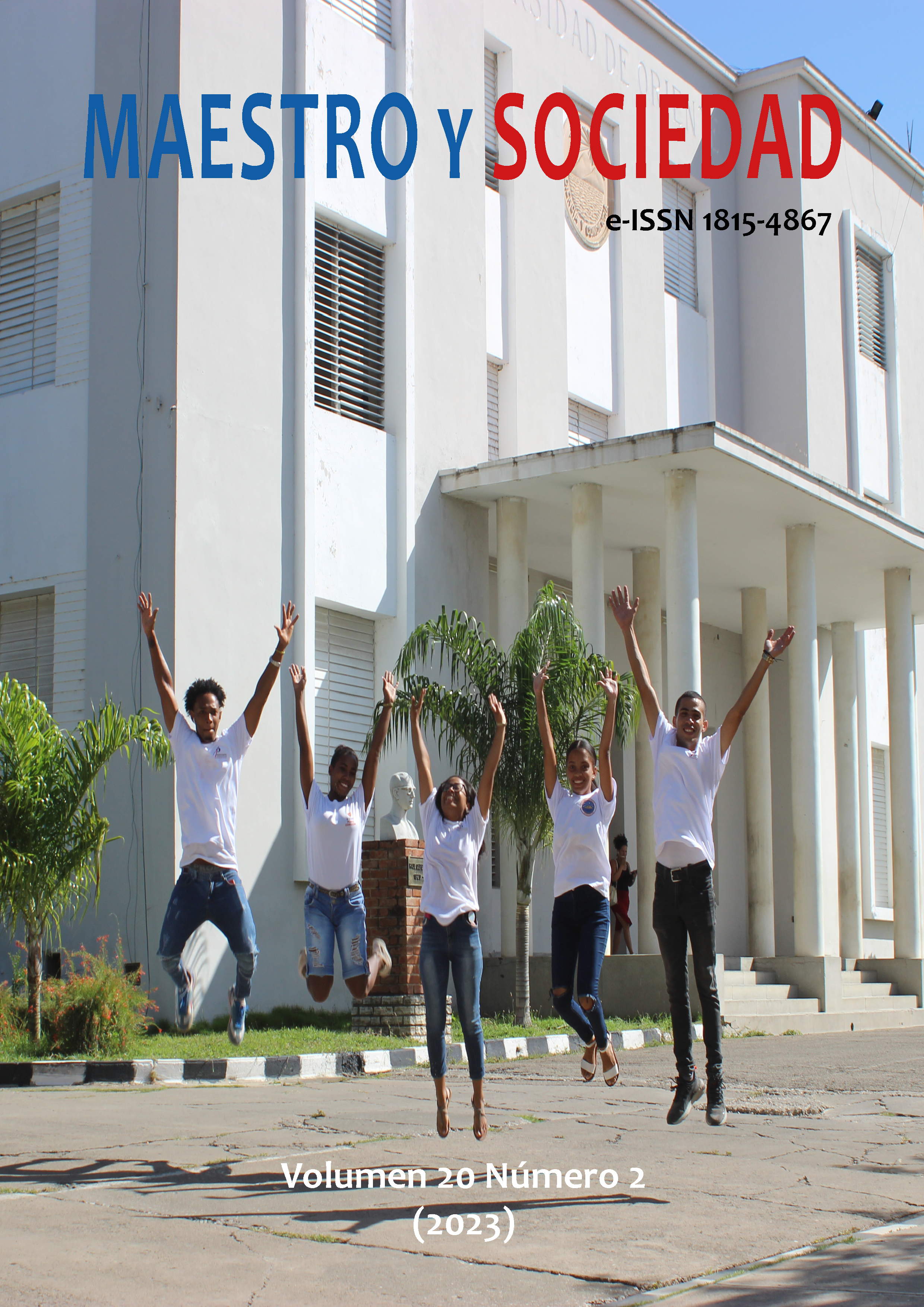The formation for the safe management of ICT from the university-company relationship
The formation for the safe management of ICT from the university-company relationship
Keywords:
ICT, basic competence in infocommunications, human capital, university-business relationshipAbstract
Introduction: The irruption of ICT in socio-productive processes requires human capital whose skills are developed to promote a proactive mode of action before the contributions of ICT. Materials and methods: This process is conceived through the bilateral contribution of the university-business relationship, supported by a proposal for an alternative action plan that makes possible the possession of good practices in the safe management of said technologies by the human capital linked to the business sector that focused the objective outlined in the investigation that was protected in the materialist dialectic using in a special way the analysis and synthesis, induction and deduction and the unity of the logical and the historical. Results: The processes that make possible the preparation of human capital based on good practices in the management of ICTs, converge in the development of basic competence in infocommunications and a proactive mode of action before the contributions of ICTs. Discussion: The strengths of the business sector in the face of the possibility of an incident have a direct relationship with the development of basic competence in infocommunications and the proactive mode of action of its human capital to safely manage ICT in any field. Conclusions: The growth in the preparation of human capital from a training process around the safe management of ICT from the university-business bilateral link will contribute to the greater efficiency of the socio-productive and training processes in the university, based on the attention to the needs of production and services in the demanded areas, without losing sight of the fact that the training of the graduate is directed towards an action that allows him to solve situations that may not be predetermined.
References
Bunk, O. P. (1994). La transmisión de las competencias en la formación y perfeccionamiento profesionales de la RFA. Formación Profesional. Revista Europea.
Bursztein, S. (2014). Factor humano:el talón de Aquiles de la seguridad I. https://www.magazcitum.com.mx/index.php/archivos/2735
Elliot, J. (1993). El cambio educativo desde la investigación-acción. Ediciones Morata.
España. (2004). Gobierno de Canarias. Consejería de educación, Cultura y Deportes. Competencias básicas en las tecnologías de la información y la comunicación (TIC). Evaluación e investigación educativa. http://www.redes-cepalcala.org/inspector/DOCUMENTOS%20Y%20LIBROS/COMPETENCIAS/COMPETENCIAS%20BASICAS%20EN%20TIC.pdf.
Figueredo Reinaldo, O. et al. (2019). Cuba en Datos: A un año del Internet por el móvil. http://www.cubadebate.cu/especiales/2019/12/06/cuba-en-datos-a-un-ano-del-internet-por-el-movil/
Forgas Brioso, J. A. et al. (2005) Las competencias profesionales. Un nuevo enfoque. SWISSCONTACT.
Font Hernández, R. (2015): La dimensión seguridad y sus elementos esenciales para la Competencia Básica en Infocomunicaciones y su inserción en el currículo de las carreras pedagógicas. Maestro y Sociedad, 12(2). https://maestroysociedad.uo.edu.cu/index.php/MyS/article/view/1306/.
Font, R. (2014). Lo ético axiológico en los elementos esenciales de la seguridad informática en la competencia básica en infocomunicaciones. Universidad de Ciencias Pedagógicas “Frank País García”.
Herán, J. M. (2019). 5 ideas para establecer una dinámica de capacitación en una empresa. https://www.welivesecurity.com/la-es/2019/11/04/ideas-establecer-dinamica-capacitacion-seguridad-empresa/
Iglesias Fraga, A. (2019). El factor humano, causa y solución de la ciberseguridad. En TICbeat. https://www.ticbeat.com/seguridad/el-factor-humano-causa-y-solucion-de-la-ciberseguridad/
Iniseg. Factor humano y ciberseguridad. Un riesgo en crecimiento. En Ciberseguridad al dia. 14 de enero 2020. Recuperado de https://www.iniseg.es/blog/ciberseguridad/factor-humano-y-ciberseguridad/
Juanes Fernández, D. (2021). El factor humano y su importancia en la ciberseguridad. en Atalayar. https://atalayar.com/blog/el-factor-humano-y-su-importancia-en-la-ciberseguridad
Mendoza, M. A. (2016). Ética, el factor humano más importante en el ámbito de la ciberseguridad. https://www.welivesecurity.com/la-es/2016/09/20/etica-en-ciberseguridad-factor-humano/
Owaida, A. (2021). Ciberseguridad en la industria financiera: riesgos y desafíos. https://www.welivesecurity.com/la-es/2021/03/24/ciberseguridad-industria-financiera-riesgos-desafios/
Pérez, A. (2019). El éxito de los ciberataques depende del factor humano. https://www.directivosyempresas.com/internet/tecnologia/ciberseguridad-factor-humano/
Downloads
Published
How to Cite
Issue
Section
License
Copyright (c) 2023 Rubén Font-Hernández, Yoan Silveira-Escalante

This work is licensed under a Creative Commons Attribution-NonCommercial-NoDerivatives 4.0 International License.
This journal provides immediate open access to its content, based on the principle that offering the public free access to research helps a greater global exchange of knowledge. Each author is responsible for the content of each of their articles.



























 Universidad de Oriente
Universidad de Oriente 